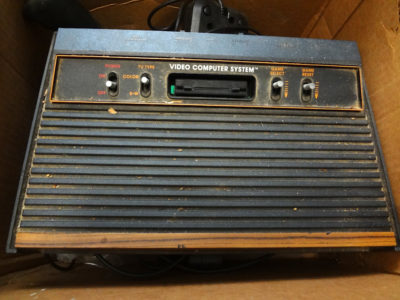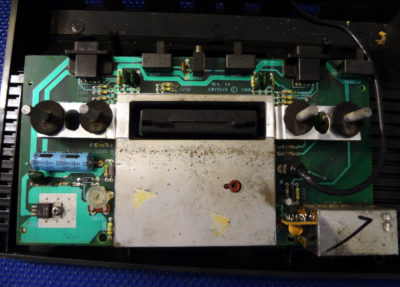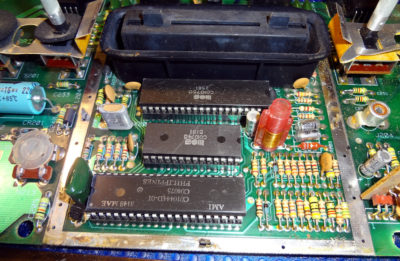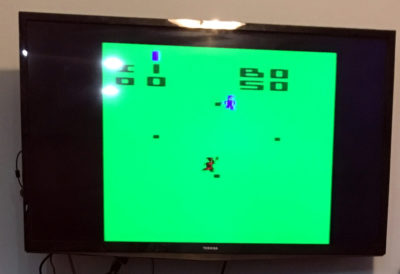On the bench are two Atari 2600 video game systems that were given to me by one of the members of the local Slack community I hang out in. They’d been sitting in storage for the past few decades and didn’t seem to be working so he asked if anyone wanted them before they went out to the dumpster. I, of course, said I’d take them.
They’re of two different vintages based on the serial numbers, and came with a number of controllers and cartridges. For having been in storage, they looked in decent shape, although the older one was obviously sitting out in the open more than the other newer one.
The 2600 isn’t too difficult to disassemble, and there’s already a pretty good Atari 2600 teardown on the iFixit site. This particular unit was made for Atari by Dimerco Electronic Corp in Taiwan and has serial number 82227274 according to the sticker on the back. I was able to brush off a lot of the dirt on this one, but it could still use a good cleaning.
Inside looked relatively clean with some tarnish and corrosion on the RF shield. No obvious issues with any of the components. From the silkscreen, this is a Rev 14 board.
Underneath the RF shield are the brains of the system: the MOS 6532 RAM-I/O-Timer (RIOT) chip just below the cartridge connector, the MOS 6507 CPU, and the Atari television interface adapter (TIA) chip at the bottom.
The RCA jack to the right is where the video signal goes out to the TV.
Initial testing of the two systems didn’t show anything on the screen. I ordered some RCA-F connector adapters (no idea these even existed until I started looking for them) to replace the RF modulator, and was able to get some images on the screen with one of the cartridges inserted. There was no response to any of the switches or controllers though, so more troubleshooting is going to be required.
I’ll need to do some more research on repairing and refurbishing these. I’ve found some potentially useful threads on the AtariAge Atari 2600 forum, so I’ll dig around there some more.



